Transgender people are those whose gender identities do not match the conventional gender associated with their sex assigned at birth.1 They face unique challenges including gender dysphoria, discrimination, and a lack of authetic representation in the media. This article details transgender-related concepts such as trans terminology, gender, the transition process, trans issues in politics, and transgender media. It also dispels some common misconceptions about trans issues.
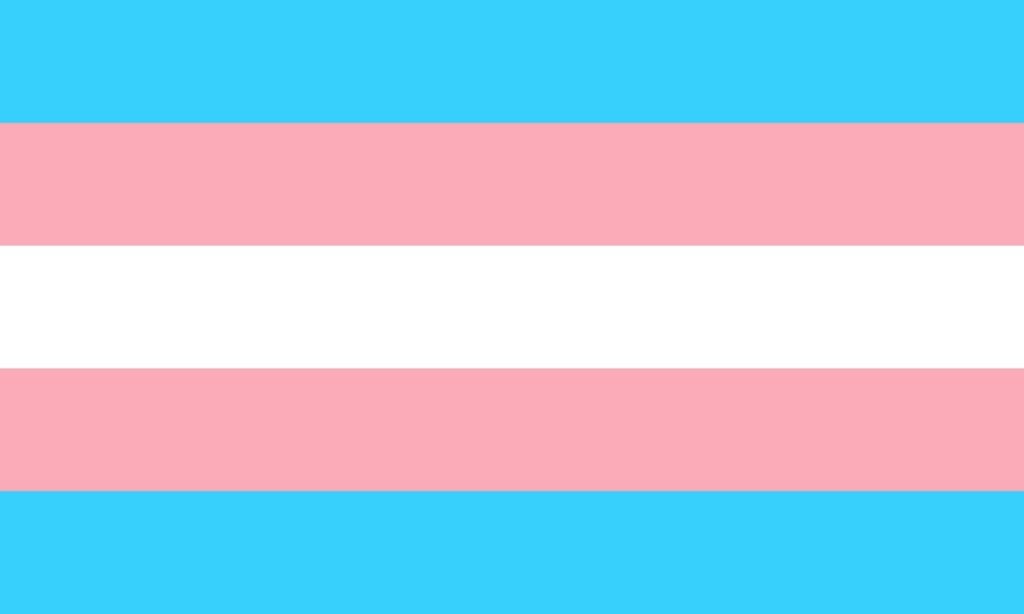
Transgender
In order to understand the term transgender, it is helpful to first differentiate between gender, gender identity, and sex assigned at birth. Sex assigned at birth is a medical categorization that doctors use to classify newborn babies as male, female, or intersex based on the appearance of the external genitalia.1 Gender is a social construct that classifies a person as a man, woman, nonbinary, or some other identity.1 Gender identity is an individuals’s internal sense of gender.1 While a person’s sex assigned at birth and gender identity often align, sex assigned at birth cannot be used to predict gender identity.1 Transgender individuals have a gender identity or gender expression that does not match the conventional gender associated with their sex assigned at birth.1 Transgender is not a type of gender, but rather a term that refers to a person’s experience of moving away from their assumed gender in some way.1 Transgender is often used as an umbrella term for anyone who is not cisgender.1 Cisgender is the opposite of transgender and refers to someone who identifies with the conventional gender based on their sex assigned at birth.12 The shortened version of transgender is “trans,” which can be used in front of a person’s gender or gender expression as a descriptor (e.g., trans woman, trans nonbinary, trans masculine).1 Similarly, the shortened version of cisgender is “cis,” which can also be used in front of a person’s gender (e.g. cis woman, cis man).1
Terminology is constantly evolving, as there is an ongoing conversation within the trans community about what terms are most appropriate. Generally, most people in the gender expansive community identify with the terms transgender or trans. Gender expansive is an umbrella term that is inclusive of transgender identities and refers to people whose genders are seen as broadening their society’s notion of gender norms.1 The term transsexual is sometimes used to refer to people who have had their physical sex characteristics medically altered in order to match their gender identity; however, using this term can be problematic because it is outdated, and the term should not be used to identify trans person unless they specifiacally use the word to describe themselves.1 The word transvestite, which historically refers to a person who wears clothes associated with a different gender, is also widely considered to be an outdated and derogatory term.1 The term was historically used to inaccurately diagnose people with medical or mental health disorders.1 The term cross-dresser is used instead to describe people who dress as a member of a different gender, but are not necessarily trans.1
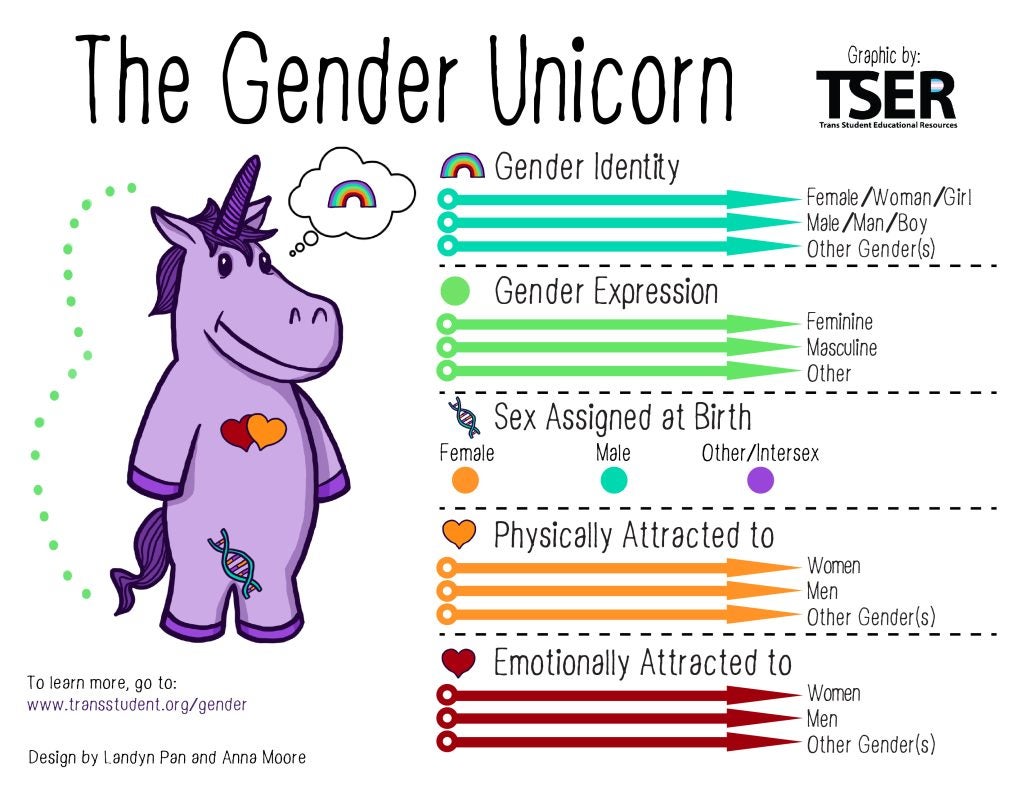
Understanding Gender
There are numerous and diverse ways a person may experience their gender. Some gender identities include cisgender, gender nonconforming, gender nonbinary, genderqueer, gender fluid, and transgender. Gender is separate from gender expression (e.g. masculinity, femininity, and androgyny) and sexuality.1 This means that you cannot assume a person’s gender identity based on their sexuality, appearance, clothes, or behavior.2 The only way to know someone’s gender is to ask them. Historically, most cultures viewed gender as a binary between man and woman.3 However, some indigenous tribes have traditionally recognized a third gender known as two-spirit, and some parts of India, Pakistan, Bangladesh, and Nepal have a similar concept called Hijra. These terms are culturally specific and should not be appropriated to describe people who do not belong to those cultural groups.2
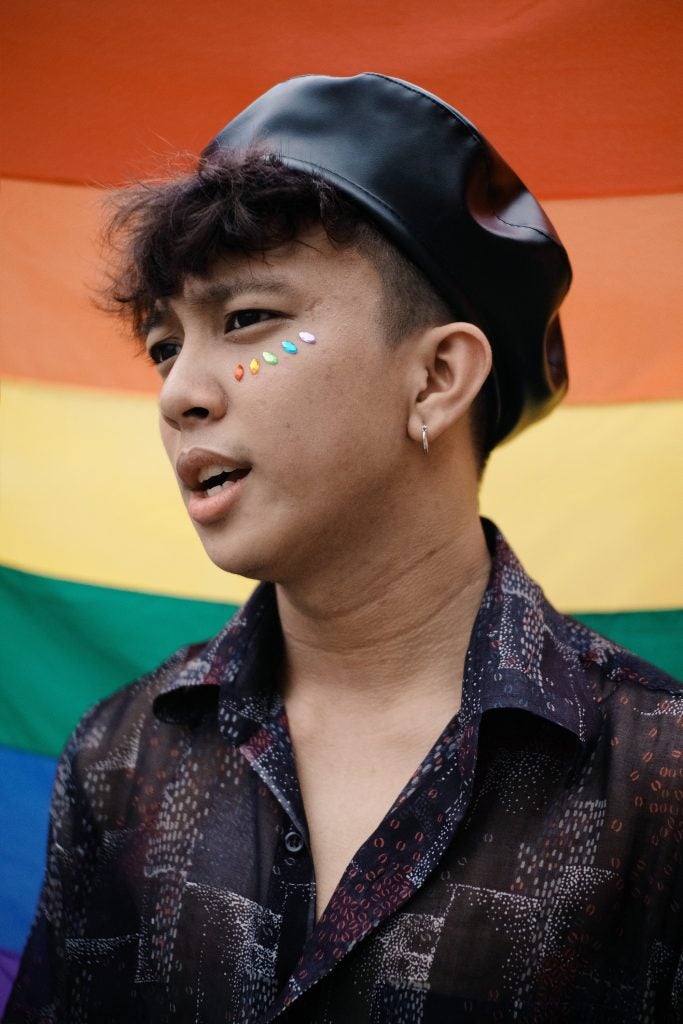
Transitioning
A transgender individual’s transition is the process of outwardly expressing their internal gender identity.1 Transitioning can help to alleviate symptoms of gender dysphoria, a term which refers to the negative or uncomfortable emotions that many trans people feel about their bodies or appearances.1 Transitioning is a continuous process that has three general aspects: emotional, social, and medical.1 However, the transition process is different for everyone. A transgener individual may transition in any combination or none of these aspects.1 The emotional element of transitioning involves internally realizing and exploring one’s gender identity.1 The social aspect can include a person changing their name, using different pronouns, coming out to others, and changing their gender expression.1 Medically transitioning can involve taking hormones, hormone blockers, cosmetic treatments, and undergoing gender affirming surgeries.1 Some people who are transgender alter their primary or secondary sex characteristics with hormone treatments, surgery, or both. These surgeries might include transitioning from either female-to-male (FTM) or male-to-female (MTF).1 However, these changes are not required to identify as trans, since someone who is transgendered may not have the desire to change their anatomical sex.2 Treatments are a personal choice and medical procedures are not necessary to validate an individual’s gender identity.2 The transition process is different for everyone. There is no definitive end to the transition process, and for many people it can be lifelong.
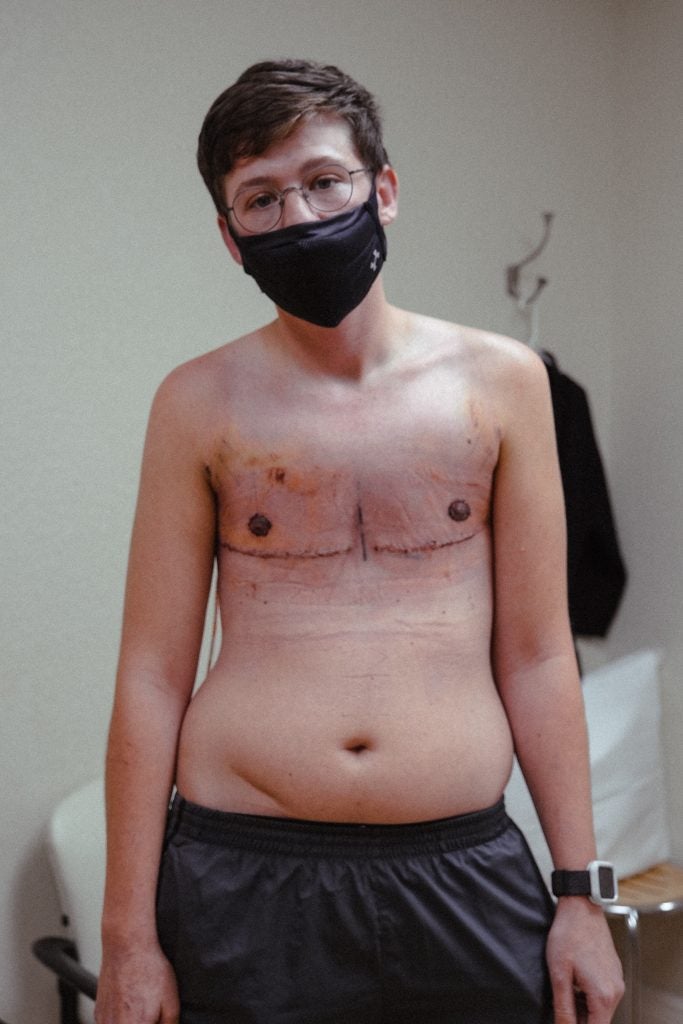
Pronouns
Pronouns are a key aspect of gender expression. Common pronouns include she/her/hers, he/him/his, they/them/theirs, and zie/zir/zirs, among others.12 Transgender people will often ask their peers to refer to them by their preferred pronouns, which are influenced by their gender identity rather than their sex assigned at birth. Pronouns are not necessarily correlated with gender and cannot be assumed.2 As with someone’s name or gender, the only way to know someone’s pronouns is to ask them.2 Honorifics are another way to communicate one’s gender. Mr. is conventionally used for men, Mrs. is conventionally used for married women, and Miss is conventionally used for young girls. Ms. is another option traditionally used by women who do not want the connotations that go with Mrs. or Miss. Recently, Mx. (pronounced like “mix”) has become a non-gendered alternative honorific that anyone can use regardless of gender.2 Pronouns are meaningful because they affirm a person’s gender identity. One can show respect and support for an individual’s transition by using the pronouns that they prefer.2 Using the wrong pronouns to refer to a trans person is known as “misgendering.”2 Misgendering a trans individual is harmful to their psychological health and can trigger gender dysphoria. It can also potentially put a trans person in a dangerous position by exposing them as transgender, or “outing” them, which makes them more vulnerable to hate crimes, discrimination, and other manifestations of prejudice.

Using Pronouns in Context
Here are some examples of how to use some common pronouns in everyday conversations.
- Alex loves to play baseball. Their favorite position is shortstop and their batting average is 0.271.
- Grace enjoys baking for her family and friends. Yesterday she made caramel brownies.
- Simon is a huge Star Wars fan. He has posters of his favorite character, Yoda, all over his room.
- Sam just moved to California. Zie used to live in Oregon, but had to move for zir job.
All of these examples will work with any other pronouns as well.
Political Climate for Transgender People
Disclaimer: This section discusses sensitive topics including transphobia, violence, homicide, sexual assault, and suicide, which may be triggering to some readers.
Transgender people face discrimination in virtually every society in the world. Transphobia and cissexism are terms that refer to prejudice against trans individuals, which can be subtle internal prejudice or systemic and overt discrimination and violence. While it is more common among groups of people who are politically conservative, highly religious, older, less educated, or more authoritarian, transphobia can manifest in any demographic.4 Transphobia and cissexism also exist within the LGBTQIA+ community, and sometimes even in the transgender community itself. They also exist on a familial level, as trans folks often face rejection from their family members based on their gender identities.5 These forms of bias have tragic consequences. The transgender community faces far higher rates of discrimination, poverty, unemployment, houselessness, and acts of violence (including sexual assault and homicide) than cisgender people.5 According to the Human Rights Campaign, there were 44 fatal violent incidents against trans people in 2020, making it the most violent year on record since they began tracking in 2013.6 In 2021, the number surpassed 57, most of which involved Black or Latinx transgender women.6 Anti-trans violence disproportionately affects trans women of color due to the intersectionality of transphobia, racism and sexism.5 Anti-trans discrimination is detrimental to the mental and emotional well-being of transgender individuals. Thus, trans people are more likely to suffer from adverse mental health conditions including depression, anxiety, suicidal thoughts, and PTSD.7

Transgender Media
The media plays a significant role in shaping people’s perceptions of the trans community. There is evidence to support that frequent television watching correlates with more favorable views towards the transgender community.4 This is likely due to increasing transgender representation in mainstream media among celebrities and in shows and movies. However, the media can also be a source of transphobia and cissexism. Movies and shows often perpetuate negative stereotypes about the trans community. Cisgender actors like Eddie Redmayne and Jared Leto have been criticized for playing transgender characters because they are inauthentically representing the trans community and also claiming roles that could have potentially gone to transgender actors.
JK Rowling, author of the Harry Potter series, has been recently criticized for denouncing the transgender community on Twitter.8 Rowling is a notorious “TERF”, which stands for trans-exclusionary radical feminist. Her new book, “Troubled Blood”, perpetuates the harmful and false stereotype that transgender women are sexual predators and actually just men in disguise. The TERF movement has recently gained momentum on Twitter as people spread misinformation about the transgender community, including the false belief that the existence of trans people undermines the feminist movement.8
Myths and Facts About Transgender People
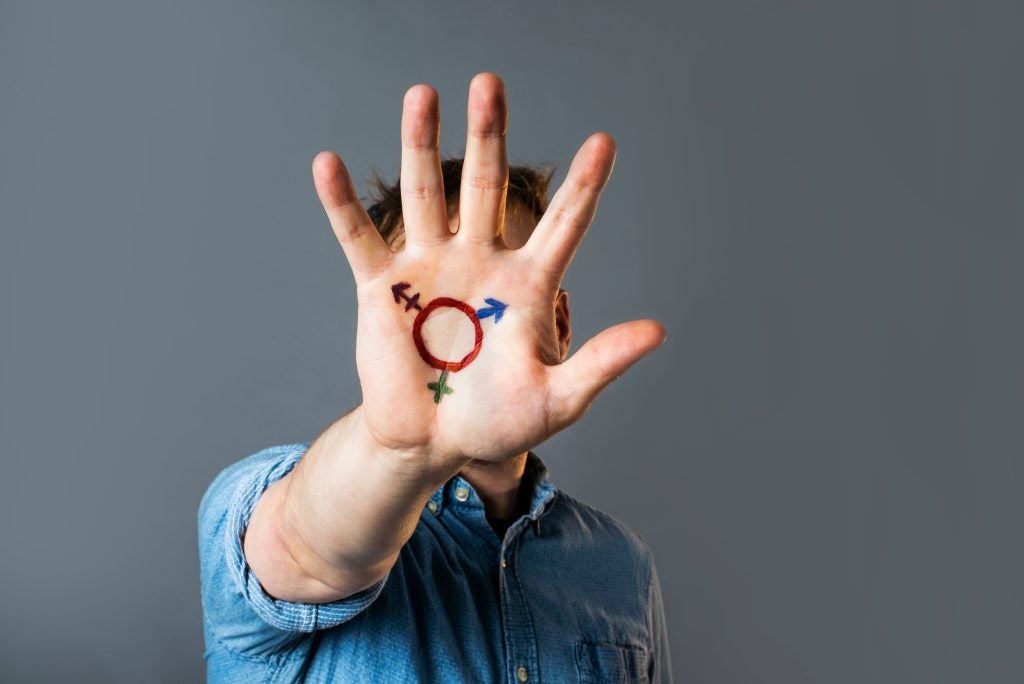
Myth: There are only two genders.
Fact: Gender is not a binary with two options (man and woman). Instead there is a wide array of different gender identities someone can have. This includes man, woman, nonbinary, genderqueer, gender non-conforming, agender, bigender, gender fluid, etc.1
Myth: There is no biological evidence to support gender diversity.
Fact: Scientific research in genetics, neurobiology, and endocrinology support a diverse array of genders.9 The myth that science only supports the existence of two genders is based on an oversimplification of the biology surrounding gender.9 Every human brain is made up of a unique combination of both male-typical and female-typical components, leading to complex gender identities.9
Myth: Only trans people use pronouns.
Fact: Everyone uses pronouns, including cisgender people.2
Myth: Trans people have to “pass” in order to validate their gender identity.
Fact: Trans people do not have to “pass.” “Passing” means that a transgender person conforms to the societal expectations of their gender identity based on physical appearance as defined by cisgender people.1 “Passing” is completely irrelevant to a person’s gender identity, and not every trans person’s goal is to “pass”.2
Myth: Having sex with a trans person means that you are gay.
Fact: Sexual relationships between men and women are heterosexual, regardless of whether they are transgender or cisgender.1
Myth: People are trans for sexual reasons.
Fact: Gender identity is not sexual.1 This myth stems from a theory proposed by Ray Blanchard, who stated that trans people are trans because it sexually excites them.10 Blanchard’s theory has been disproven and discredited by the scientific community based on his poor research methods.10
Resources for Transgender People
The following is a list of resources available to transgender individuals.
National Suicide Prevention Lifeline
Trans Women of Color Collective
Concluding Remarks
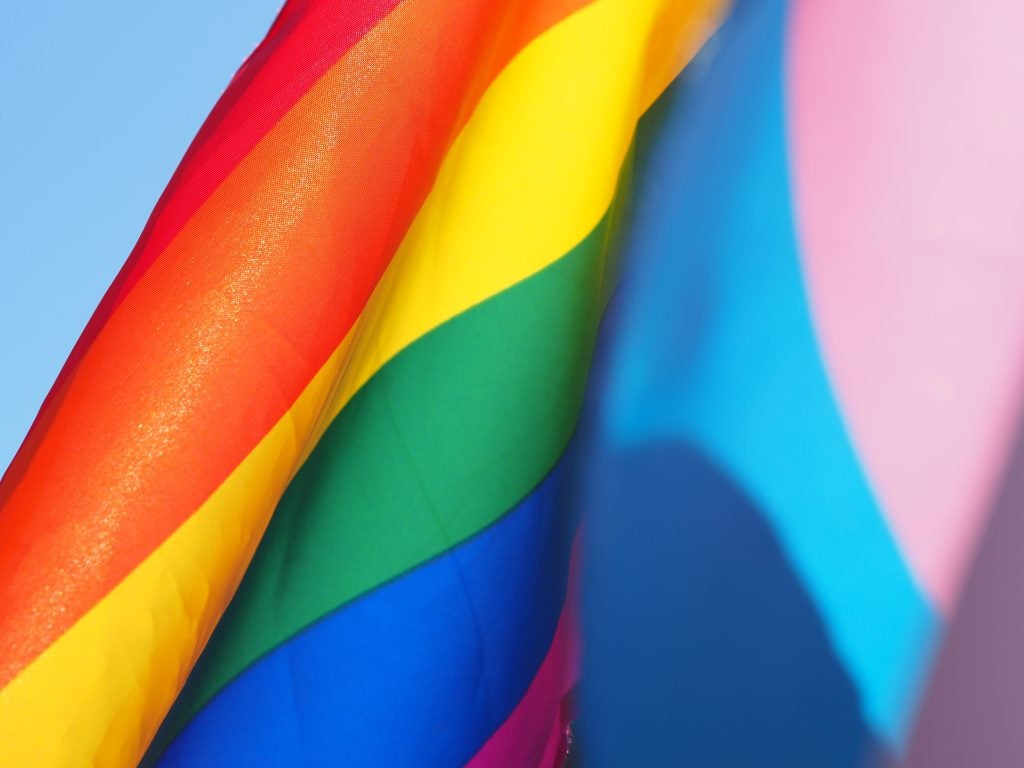
Transgender people are traditionally and systematically marginalized community and transgender issues are still debated within the trans community. Therefore, the information in this article is subject to change with additional research and discussion. Because of the changing nature of transgender issues, it is recommended to continue educating oneself by using online resources such as the ones listed above. Cisgender people who would like to learn about ways to support transgender people should refer to the “Allyship to the LGBTQ+ Community” article. Further, listening to trans folks, including trans people of color, about their feelings and the ways they would like to be supported is the best thing that one can do as an ally.
References
- LGBTQIA+ GLOSSARY, University of California, Santa Barbara Resource Center for Sexual & Gender Diversity.
- The Trevor Project. (2020, March 27). “A Guide to Being an Ally to Transgender and Nonbinary Youth.”
- Singh, S. (2020). Understanding Gender Spectrum: Indian Experience. Eurasian Journal of Management and Social Science, 1(1), 36-48.
- Jones, Philip Edward, et al. “Explaining Public Opinion toward Transgender People, Rights, and Candidates.” OUP Academic, Oxford University Press, 15 May 2018.
- Casey, L. S., Reisner, S. L., Findling, M. G., Blendon, R. J., Benson, J. M., Sayde, J. M., & Miller, C. (2019). Discrimination in the United States: Experiences of lesbian, gay, bisexual, transgender, and queer Americans. Health services research, 54, 1454-1466.
- The Human Rights Project. (2021). “Fatal Violence Against the Transgender and Gender Non-conforming Community.”
- Valentine, S. E., & Shipherd, J. C. (2018). A systematic review of social stress and mental health among transgender and gender non-conforming people in the United States. Clinical Psychology Review, 66, 24-38.
- Ennic, Dawn. (2019, December 19). “J.K. Rowling Comes Out As A TERF.” Forbes.
- Roselli C. E. (2018). Neurobiology of gender identity and sexual orientation. Journal of neuroendocrinology, 30(7), e12562.
- Moser C. (2010). “Blanchard’s Autogynephilia Theory: a critique.” Journal of Homosexuality. 57(6):790-809.
Last Updated: 24 May 2022
